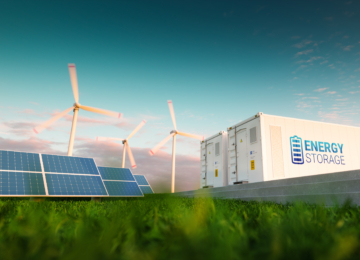National direction crucial for faster adoption of energy storage
The month of June at Energy Storage NL (ESNL) is all about permits and energy storage sites. During a recent networking event, a survey was conducted among some 50 developers and representatives of municipalities about the main bottlenecks in the local incorporation of energy storage. The results highlighted the need for national clarity and better cooperation to accelerate the development of storage projects.
Storage locations difficult to achieve
An overwhelming majority of respondents (62%) experience the search for suitable locations for energy storage as a problem. Only 10% indicate that this is not a major obstacle. Some 28% are neutral.
The biggest obstacle in finding suitable sites appears to be current spatial policies. Almost half of the participants (48%) cite existing spatial regulations or zoning plans as a stumbling block. Storage often does not fit well within the current zoning plan and there is a shortage of available space. In addition, 39% indicates that coordination with grid operators is difficult. 37% of the respondents also felt a need for more clarity from the central government on where energy storage is indeed desirable.
Permits take too long
There are also concerns with licensing. More than half of the respondents (51%) feel that obtaining a permit is unnecessarily time-consuming. For a significant portion (37%), the process is neither positive nor negative, while 12% do not recognize the problem.
Asked about the biggest obstacle in permitting, 62% points to a lack of knowledge on the part of the competent authority. Local authorities are often still insufficiently familiar with the specific characteristics and requirements of energy storage. Other bottlenecks mentioned are: spatial regulations (40%), requirements around noise pollution (27%) and safety requirements (13%).
Great need for national frameworks
Survey participants largely agree that national direction is essential to accelerate energy storage projects. A clear majority (60%) calls for a national framework providing clear guidelines on how and where energy storage can be spatially incorporated. They also call for more clarity from grid operators (49%), faster and more transparent permitting procedures (28%), and better coordination between developers and municipalities (26%).
Waiting times increase
Energy Storage NL sees in practice that waiting times for the realization of energy storage are increasing. The permit procedure can take up to two years in some cases. These delays are worrisome because energy storage plays a crucial role in the energy transition.
ESNL stresses that national clarity on future storage needs is essential. On a positive note, grid operators are now taking steps to map so-called flex locations - places where energy storage can relieve the electricity grid. This helps to clarify where storage is desirable so that municipalities can adjust their spatial plans accordingly.
However, it is important to further optimize coordination between municipalities and grid operators. Only then can integration conditions be properly aligned and the realization of energy storage actually accelerated.





